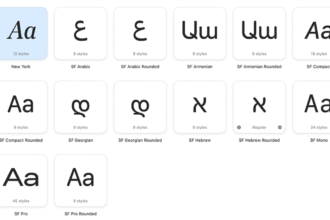Audio enhancement makes sound better. It fixes problems like background noise and low volume to create clear, professional audio. Many people use basic tools to improve their audio. Audacity is a free program that helps fix audio problems. Users must adjust the settings by hand to make the sound better.
Now, there are new tools that use artificial intelligence (AI) in the form of AI audio enhancers. This article examines two ways to enhance audio: the manual way with Audacity and the AI way with Wondershare Filmora. Understanding both methods helps choose the right tool for better audio.
Part 1. Differences Between AI Audio Enhancers and Manual
Before comparing Audacity and Filmora, it helps to understand how manual and AI audio enhancement differ. Each method has its strengths and weaknesses.
Manual Enhancement
Manual Enhancement Manual enhancement means fixing audio by hand. The advantage lies in that users can control every tiny detail of the sound, while minor changes are possible to get the exact sound needed. The disadvantage is that users need special knowledge about audio editing, and long hours can make people tired and less careful in audio editing.
AI Audio Enhancement
AI Audio Enhancement uses computer programs to fix audio automatically. As for its good points, AI audio enhancers can perform more audio editing tasks because they are machines and are only potentially limited by AI tokens (if any). Of course, anyone can use it without special training. However, there is less freedom to make creative changes, and results depend on how well the AI is trained.
Part 2. A Comparison of Workflow Between Audacity and Filmora
The way users work with Audacity and Filmora is very different. This section shows how each program handles audio enhancement.
Wondershare Filmora
Wondershare Filmora is a video editing program with a built-in AI audio enhancer. This means you won’t have to use another tool to improve your video project’s audio. Of course, you can also use it for standalone audio editing, especially since Filmora gives users in-depth audio editing tools besides its AI tool.
To begin enhancing audio with Filmora, follow the steps below:
Step 1: Install, download, and launch Wondershare Filmora. Log in or sign up with your Wondershare, Facebook, Google, X, or Apple account.
Step 2: Access the editing interface by clicking New Project.
Step 3: Click Import Media, then upload your audio file. Once it’s under Media, drag and drop it to the timeline.
Step 4: On the right-hand panel, go to Audio and locate the AI Voice Enhancer. Here are two features:
- Voice Clarity. Reduces environmental or other background noises to elevate the voice or main sound.
- Voice Beautification. Automatically applies the proper voice or sound editing necessary to improve the pleasantness of the recorded sound.
Step 5: Once done, click Export to use your newly-improved audio file.
After the AI enhances the voice, users can still make more changes. Filmora has many audio tools or editing features for manual editing, similar to Audacity.
Audacity
On the other hand, Audacity is a basic audio editor that many people use. It offers complete control over audio editing but requires more work. Here are things you might need to do to improve audio quality:
Noise Reduction
First, you’ll have to apply basic noise reduction. To do this, use the Noise Reduction effect. You’ll have to adjust the following: Noise reduction (dB), Sensitivity, and Frequency smoothing (bands).
Equalization
Under Effects > Equalization, you’ll be adjusting the frequency bands of your audio. This is important for leveling your voice or audio with other music or background effects that you might use.
Compression
Lastly, you’ll have to use Effect > Compressor to even out the volume levels in your recording. Here, you’ll adjust different values like the Compression curve and Smoothing.
As you can see, the process in Audacity needs more time and knowledge since there’s no automatic AI tool to enhance audio quality. Even then, too much application of the filters can gravely affect your audio quality. Without AI’s help, users need to learn through practice and mistakes. Each step requires attention and understanding of audio editing basics.
Part 3. Final Verdict: Which Is Better To Enhance Audio Quality?
Both Filmora and Audacity serve different audio enhancement needs. However, each tool can be best for various scenarios.
For quick audio fixes, go for Filmora’s AI audio enhancer. Its AI tools can improve sound quality in minutes. This helps when time is limited, many audio files need fixing, or the user is new to audio editing. Besides AI, Filmora also has regular audio editing tools. After AI enhancement, users can fine-tune the volume, adjust bass and treble, remove extra noise, or add other special effects.
Audacity remains valid for detailed audio work. It’s excellent when complete control is needed, or the project requires specialized effects that can only be made through creative input. Audacity might also be a good option if cost is a concern since it’s free.
Which Is the Better Choice?
Filmora offers AI audio enhancement alongside basic and advanced audio editing tools. Still, you can pick Filmora for fast, easy enhancement and choose Audacity for complete control. Learning and using both for different projects requiring different audio enhancement levels is best.
You see, both tools can create good audio. The right choice matches the user’s time, skill level, and project needs.
Conclusion
In summary, Wondershare Filmora and Audacity offer distinct approaches to improving audio quality. Filmora’s AI-powered tools provide quick, easy fixes for those new to audio editing. Audacity gives experienced users complete control over every aspect of the audio workflow.
Filmora is recommended for users who are seeking an efficient, AI-assisted audio enhancer. Its combination of AI tools and manual editing options makes it versatile. However, Audacity remains a valuable option for those who want to fine-tune audio from scratch.














